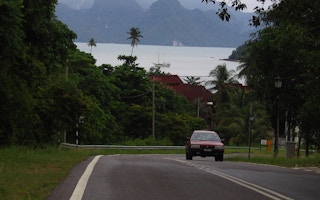Ahead of a housing development in Panama, an assessor tasked with figuring out how the plans might affect local forests reported that about a dozen species of birds lived in the area. An environmental impact assessment, or EIA, like this one is one of the few tools — if not the only one — that development planners have to understand how projects like roads might affect local ecosystems.
And yet EIAs are also notoriously flawed. In this case, a follow-up study by a bird expert turned up 121 bird species, including a few life-list varieties, in just a two-hour survey.
EIAs shoulder a lot of criticism for being narrow, cursory and at times inaccurate. What’s more, the people actually building the roads may not even be aware of these shortcomings. With that in mind, a team of environmental scientists and ecologists recently penned an article laying out the potential issues with EIAs in Jurutera: The Journal of Malaysian Engineers.
On a recent visit to Malaysia, lead author Mohammed Alamgir, an environmental scientist at James Cook University in Cairns, Australia, and his colleagues shared with a group of engineers some of their research on the effects that road projects can have on their surroundings. During the meeting, Alamgir said they found an eager audience.
“We understood that definitely, they want to do something better for their community,” Alamgir said. “But most of the time, they don’t have evidence or science to make the right decision.”
Malaysia, like many developing countries, has been on a road-building tear in recent decades. According to the Association of Southeast Asia Nations (Asean), the length of roads in Malaysia was just over 90,000 kilometers (56,000 miles) in 2006, but that figure jumped to nearly 206,000 kilometers (128,000 miles) in 2013. The team’s presentation, like the recent article, was part of a broader project anchored in an alliance called the Global Road Map to get scientific research on the risks — environmental, but also social and political — into the hands of planners before future projects are “set in concrete,” said co-author and botanist Mason Campbell, also from James Cook University.
Led by tropical ecologist Bill Laurance, the team is working with local groups across Southeast Asia who then connect directly with the roadbuilders. Laurance, from James Cook University, is a member of Mongabay’s advisory board.
“Hopefully what we generate, as well as being a scientific output, is incorporated practically into the engineering community,” Campbell said.
In many ways, it’s an uphill battle, the researchers acknowledge, because these types of projects develop a sort of momentum due to the economic and social benefits that roads are supposed to provide. Interests ranging from business associations to voters to politicians all place a “huge” amount of pressure on planners and engineers to get roads built, Alamgir said.
“They have a vested interest in having the development proceed,” Campbell added, “so the EIAs in vast majorities are rubber stamps.” They’re mandatory checkboxes for builders, but often EIAs don’t hold much sway over the direction of the project.
One issue is who pays for EIAs. Typically, the construction company will have to foot this bill. They’ll contract with a company that employs scientists who are supposed to take a hard look at how the road might affect such issues as water flow and plant and animal communities. But contracting agencies staffed with less experienced technicians can offer their services for a lower price, which could result in misleading or inaccurate results, such as the case with the Panama housing project.
Assessors also risk not being considered for future EIAs if they’re too thorough, Campbell and Alamgir said. If contractors provide detailed results that could require changes to a construction project, the company that hired them might be more inclined to go with a different consulting firm, one that’s less likely to throw up costly hurdles to future projects.
Campbell advocates the establishment of an independent governmental organization that would be responsible for spot checks of EIAs. He envisions a group that would in some cases do its own environmental review to verify the results, with the goal of holding projects to higher standards of accountability.
“I think that would make a massive difference,” Campbell said.
How roads will impact sensitive ecosystems is an important issue, as the team predicts that construction crews will build 25 million kilometers (15.5 million miles) of roads worldwide by 2050. A lot of that is expected to happen in tropical and developing countries, but the problems with EIAs don’t end there, Campbell said.
“These EIA issues are … not just pantropical,” he said. “They’re global.”
Just as there’s substantial pressure to push through the EIA process quickly, governments eager to launch infrastructure projects are trying to soften requirements for these assessments pre-emptively to pave the way for smoother construction. Recently, the Trump administration in the U.S. announced plans to get rid of “inefficient” environmental assessments in a bid to fast-track its construction plans.
Campbell said Australian officials had made similar moves, arguing they’re “cutting the green tape.” But the scientific evidence, he said, indicates that EIAs should be strengthened, not weakened.
In reality, “The amount of green tape is non-existent,” Campbell said. “There’s not even enough, and they’re still trying to cut it.”
This story was published with permission from Mongabay.com. Read the full story.










